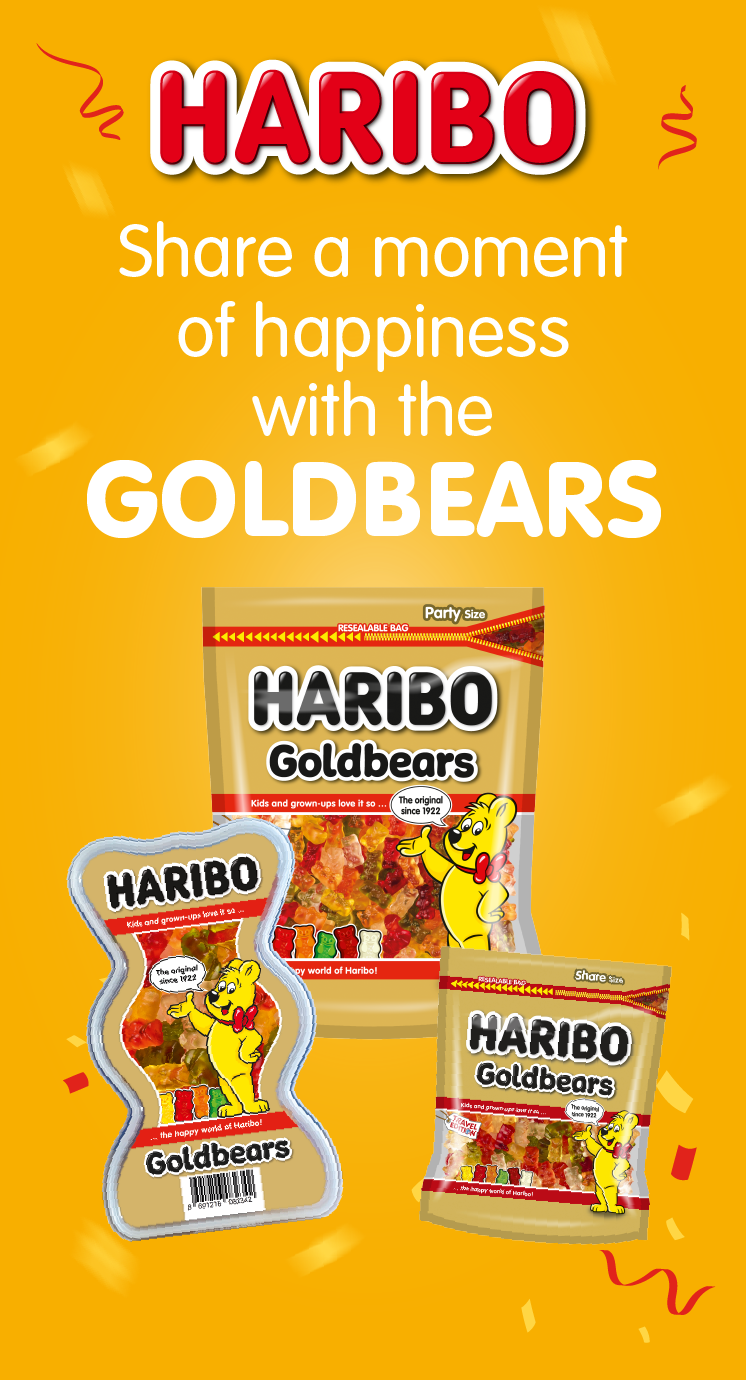
Confectionery company Haribo has partnered with The Moodie Davitt Report to celebrate National Gummi Bear Day (27 April).
Haribo is highlighting its hero Haribo Goldbear range with a spectacularly colourful makeover of The Moodie Davitt Report desktop homepage along with an elegantly curated treatment on the mobile website.
First established in 2021 between Haribo and the National Day Calendar, 27 April is officially recognised as National Gummi Bear Day, underlining the global popularity of the Haribo Goldbear.
In 2022, the Haribo Goldbear line celebrated its centenary, honouring its long history as a classic sweet treat. According to the brand owner, Haribo Goldbear’s original mission is as relevant today as it was 102 years ago: ‘To bring joy to people of all ages.’
The Haribo story began in 1922, when Bonn-based candy maker Hans Riegel developed a sweet fruit gum treat at home in his kitchen.
As the first fruit gum product in bear form, Goldbears became a global hit with confectionery lovers around the world and laid the foundations for the international success of the fledgling company.
Today, the Goldbears still hold a special position for Haribo, whose portfolio now includes over 1,000 products.
“The Goldbears are our most precious family heirloom,” commented Haribo Managing Partner Hans Guido Riegel. “My grandfather invented them, and it is the task of all subsequent generations to nurture this legacy and develop it further with such care that it will continue to bring joy to people all over the world for many years and decades to come.”

Haribo Goldbears – unmistakably an original
Inspired by the popular 19th-century fairground attraction, Hans Riegel created Dancing Bears or Tanzbaren as the earlier ancestor of the Goldbears.
At that time, the Dancing Bears were still made of Arabic gum and the characters were a little larger and slimmer than the Goldbears of today. Throughout their history, the cheerful, bright colours and fruity flavours have been central to the DNA of Haribo fruit gummy bears.
In the 1960s, Haribo introduced a slightly smaller, rounder iteration of its Goldbears. The packaging was also adapted to the changing times. Since 1961, the presentation of Haribo Goldbears expanded from individual bears to a family of bears, all together in a bag.
Packaging elements such as the gold foil and the viewing window set design standards in the 1960s that are still characteristic for the brand today, the company said.
In 1995, Haribo product designer Petra Wrede brought the first smiling Goldbear stamps into production. Just a few years later, in 1999, all Haribo Goldbears globally featured the line’s signature smile.
From the Dancing Bear to their current form – the Goldbears have been the face of Haribo for over 100 years and have always remained true to its core mission. That mission, to ‘taste like childhood’, will prevail for the next 100 years, the company said.
From Bonn out into the world
Whether in Asia, the USA, South America, Europe or Australia, Haribo Goldbears are present all in over 100 countries bringing joy to confectionery lovers all over the world, the company says.
Approximately 160 million Haribo Goldbears are produced every day. Lined up, end-to-end, an annual production for the line would circle the Earth ten times. ✈








